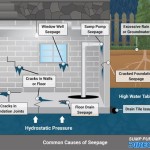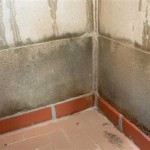How to Parge Basement Walls: A Comprehensive Guide
Parging is a crucial process for waterproofing and protecting basement walls. It involves applying a cement-based mixture to the interior or exterior of the wall to create a barrier against moisture. Here's a comprehensive guide on how to parge basement walls:
Step 1: Prepare the Wall
Start by removing any loose paint, dirt, or debris from the wall. Repair any cracks or holes using a patching compound. Ensure the surface is clean and free of any contaminants.
Step 2: Mix the Parging Mortar
Mix a parging mortar according to the manufacturer's instructions. Typically, the mixture is made of cement, sand, lime, and water. Make sure the mortar has a stiff consistency that is easy to work with.
Step 3: Apply a Scratch Coat
Apply a thin layer of parging mortar (about 1/8 inch) to the wall using a trowel or float. Scratch the surface with a wire brush or broom to create a rough texture. This will help the next layer bond more effectively.
Step 4: Let the Scratch Coat Dry
Allow the scratch coat to cure for at least 24 hours before proceeding to the next step.
Step 5: Apply the Finish Coat
Apply a second layer of parging mortar (about 1/4 inch) to the wall. Use a trowel or float to smooth the surface. Use a sponge to remove any excess mortar and create a clean finish.
Step 6: Cure the Parging
Keep the parging moist for several days by spraying it with water regularly. This will help it cure fully and develop its maximum strength.
Additional Considerations:
Interior vs. Exterior Parging:
Parging can be applied to both the interior and exterior of basement walls. Interior parging is primarily used to seal cracks and prevent moisture penetration, while exterior parging is more effective for waterproofing and protecting the wall from the elements.
Waterproof Additives:
You can enhance the waterproofing properties of parging mortar by adding specific waterproof additives. These additives can help repel water and improve the overall durability of the parging.
Slope for Drainage:
If parging the basement floor, ensure there is a slight slope towards the drain to facilitate water drainage.
Maintenance:
Parging should be inspected regularly and repaired if necessary. Cracked or damaged parging can allow moisture to penetrate the wall.
Conclusion:
Parging basement walls is a vital step in waterproofing and preserving your basement. By following these steps and considering the additional factors discussed, you can ensure a successful and long-lasting parging job that will protect your basement from the elements.

Parging Basement Walls Repair Solutions

Parge And Plaster Basement Walls Prevent Leaks Youtube

What Is Basement Parging Ashworth Drainage

Raking And No End In Sight Reshaping Our Footprint

What Is Parging Lopco Contracting Ri

Philadelphia Basement Parging Cementing Waterproofing And Painting The Walls Youtube

Parging Or Tuck Pointing Waters Basement Services

What Is Parging And Does My Basement Need It Kelly Masonry

Help My Parging Is Cracked What Do I Repair

What Is Parging And Does My Basement Need It Kelly Masonry
See Also








